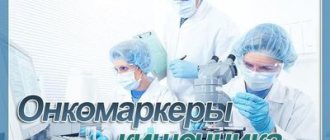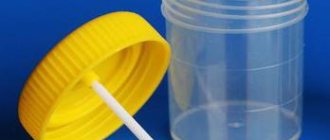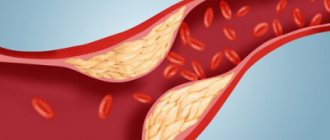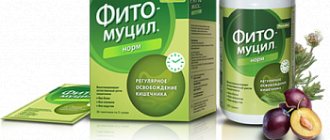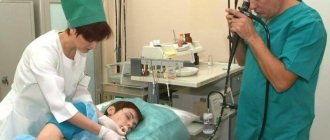General stool analysis
A coprogram, or general analysis of stool, is a study of its various physical and chemical properties, as well as various inclusions. The procedure is often a component of a comprehensive diagnosis of the state of the digestive organs and their diseases. During the analysis, color, consistency, smell, acid-base balance, as well as fat content, the presence of blood and food debris, cellular elements and some other indicators are assessed.
Proper preparation for the analysis is not difficult at all. After agreeing with your doctor, 3-4 days before the test you should cancel:
- laxatives;
- rectal suppositories;
- drugs that affect intestinal motility, for example, pilocarpine;
- medications that can cause discoloration of stool, such as bismuth or iron supplements.
Feces obtained after an enema after taking barium (during X-ray examination) are not suitable for research.
These recommendations are also valid for preparing for most other stool studies, so in the future we will consider them general.
PREPARATION FOR A BLOOD TEST
The general rules are known, but it’s worth remembering the most important things before any blood donation.
- You need to donate blood strictly on an empty stomach and in the morning. Eight hours or more must have passed since your last meal. Smoking before donating blood is also undesirable.
- No jogging, exercise, or stress on the day of the test.
- Eliminate or minimize the use of any medications if exclusion is dangerous. But if you took anything, tell your doctor or laboratory technician. This is extremely important to know for the interpretation of the analysis.
- It is not advisable to donate blood after physical procedures or studies accompanied by irradiation or intensification of processes in the body.
We have listed the most important rules, compliance with which will make the analysis more accurate and eliminate the need for a retake. Now about special research.
Blood tests for gastrin and pepsinogen must be taken strictly on an empty stomach after a 12-hour fast.
1 week before the study, refrain from taking medications that affect gastric secretion: Pepcedin, Zantac, Nizax, Ranimex, Esofex, Losec, Somac, Ranixal, Ranil.
1 day before the study, refrain from taking medications that neutralize hydrochloric acid secreted by the stomach: Alsucral, Balancid, Prepulsid, Metropam, Librax, Gaviscon.
If you have difficulty stopping medications, be sure to inform your doctor.
3 hours before donating blood, refrain from smoking.
On the eve of donating blood for lipid testing, a 12-hour fast is required.
Examination of stool for protozoa and helminth eggs
A procedure also known as a worm or parasite test. This is another microscopic examination, the objectives of which are clear from the name - to detect signs of the presence of various parasites in the intestines. In this way, for example, eggs of roundworms, hookworms, trematodes and tapeworms, as well as cysts of amoebas, balantidia and other protozoa are detected. No special preparation is required for the analysis, with the exception of the general recommendations mentioned above.
Separately, a few words should be said about the analysis for enterobiasis, that is, for pinworms. This procedure does not apply to stool examination methods, since parasites lay eggs only externally - in the perianal area. Therefore, the generally accepted method for diagnosing enterobiasis is a scraping (imprint) from the skin.
Examination of feces for occult blood
To identify hidden bleeding from different parts of the digestive system, a test for occult blood is used.
A new immunochromatographic method for examining feces for occult blood
intended for the diagnosis of hidden bleeding primarily from the lower gastrointestinal tract. In contrast to older, less specific chemical methods (benzidine test), which gave a positive reaction to both human hemoglobin and hemoglobin and myoglobin of animal origin contained in food, as well as those contained in food
products and vitamins, certain chemicals, the immunochromatographic version of the test for occult blood in feces is specific to human hemoglobin. The immunochromatographic method is significantly more convenient because it does not require dietary restrictions and does not require strict preanalytical preparation for the study for several days before the study.
In addition to general recommendations, it is advisable to consider the following:
- Three days before the procedure, limit the intake of foods rich in iron - meat, liver, tomatoes, green vegetables, apples, beans.
- At the same time, if possible, discontinue medications containing iron, as well as acetylsalicylic acid, and anti-inflammatory drugs.
Some traces of blood in the intestines may be observed as a result of certain diagnostic procedures, for example, sigmoidoscopy, which must also be taken into account when prescribing an analysis.
The results of the study should be interpreted in conjunction with the results
other types of studies, anamnesis and clinical picture.
Indications for use
Feces are the result of the body's vital activity. When food enters the oral cavity, it travels a long path that ends in the large intestine.
This is where feces are formed. At each stage, many biochemical reactions occur. A qualified specialist, considering solely the appearance of feces, can assess the performance of each organ of the gastrointestinal tract.
Stool testing is commonly used to diagnose gastrointestinal disorders, suspecting the presence of the following problems:
- oncological processes;
- dysbacteriosis;
- haemorrhoids;
- colitis and gastric ulcer;
- pancreatitis;
- cirrhosis;
- polypous formations;
- intestinal infections.
This is not a complete list of diseases. During an initial visit to a gastroenterologist, patients complain of discomfort in the epigastric area, constipation/diarrhea, and bloating. To quickly determine the cause of the disorder, a stool test is prescribed.
It is also actively used in pediatrics. For children, such diagnostics are required for allergies, suspected parasites and other digestive disorders.
Test for intestinal dysbiosis
A study that allows you to assess the ratio of normal intestinal microflora and opportunistic microorganisms, as well as the presence of pathogenic bacteria. The study also reveals the sensitivity of pathogenic microbes to antibiotics and bacteriophages. Preparation for the analysis, in addition to following general recommendations, is not required, however, it should be noted that the accuracy of the result may be influenced by antibacterial therapy. Therefore, it is necessary to conduct research before taking antibiotics.
Culture for the intestinal group: for pathogens of dysentery and salmonellosis
To identify pathogens in acute intestinal disorders, stool is cultured for pathogens, including disgroup. The essence of the study is to grow colonies of pathogens on nutrient media, during which their sensitivity to various antibiotics is also determined.
Pathogenic flora are microbes that are not normally found in the intestines. When they enter the body, they usually cause disease.
It should be remembered that antibacterial drugs can, to some extent, make it difficult to identify pathogenic microorganisms, since their concentration can decrease to very low values. Therefore, if possible, antibiotics are prescribed after stool examination. Otherwise, the principles of preparing for analysis are no different from the generally recommended ones.
Throat swab and bacterial culture
It is very important when preparing for bacterial culture and when preparing for a throat smear to refrain from brushing your teeth and eating. You can drink. Food, toothpaste, and even its residue on a toothbrush can significantly change the bacterial environment and the culture result will be incorrect and will require repeating.
If it is necessary to carry out bacterial culture for disgroup and salmonellosis , then it is not necessary , as was previously the case. Modern methods allow analysis only by making a smear.
Preparation for saliva collection
Saliva collection is sometimes necessary, for example, to analyze the level of free cortisol. Before handing over the material to the patient, the following rules must be observed:
- Do not eat for 2-3 hours before the test; you can drink clean still water.
- Avoid physical and emotional stress for 3 hours before the test.
- Do not brush your teeth, do not use toothpicks, dental floss, avoid manipulations that injure the oral mucosa for 3 hours before collecting biomaterial.
Detection of Helicobacter pylori DNA
Helicobacter is a bacterium that colonizes the stomach and has been proven to be the cause of gastritis, peptic ulcers and some cancers. The Helicobacter test is a mandatory condition for diagnosing these conditions according to modern requirements.
There are several ways to detect Helicobacter pylori. Examination of stool for the genetic material of bacteria using the PCR method is one of the least invasive of them, and therefore can be recommended, for example, for a child or the elderly.
Preparing for the study is no different from preparing for a general stool test.
PREPARATION FOR A SMUTUM TEST
After thorough oral hygiene (brushing teeth and rinsing with boiled water), the morning portion of sputum is collected in a sterile container. Sputum of a mucous or mucopurulent nature, as well as sputum containing dense whitish inclusions, and sputum colored yellowish, gray or brown, are of diagnostic value. The volume of sputum sufficient for examination is 3-5 ml. To increase the information content, it is possible to repeat (up to 3 times) sputum examination, which increases the number of positive findings.
If sputum is produced irregularly or in scanty quantities, expectorants or irritant inhalations should be used the night before and early in the morning on the day of sputum collection. Preparation of smears from material obtained in this way must be done on the day of collection. In the absence of sputum, the impossibility of aerosol inhalation or its failure to test for mycobacteria, bronchial or gastric lavage water should be examined.
Thank you for your feedback!
Return…
How to properly collect feces
To avoid unreasonable deviations in the results of the analysis and to make the study more informative, you should also follow the rules for collecting stool. There are only a few of them and they are simple:
- Only freshly excreted feces are collected for research;
- the sample is transported only in a plastic disposable container;
- Urine and menstrual blood are not allowed to enter the material.
Collection technique:
Before collecting stool, first urinate in the toilet and flush. Next, collect the stool by natural defecation into a toilet or bedpan. Then the feces are spooned into a clean, disposable container with a screw cap in an amount of no more than ⅓ of the container's volume. Close the container with a lid and deliver the stool to the laboratory as soon as possible.
Following these simple recommendations significantly increases the chances of obtaining reliable information.
Deviation from the instructions for collecting biomaterial may lead to erroneous research results.
Features of sample delivery
It is very important to understand how to donate feces so that the analysis gives the most accurate indicators. The sample is collected only after natural bowel movement. Do not use an enema under any circumstances, and do not take laxatives.
The accuracy of the result will depend on the freshness of the stool. It is strongly recommended that stool be delivered to the laboratory within three to six hours after a natural bowel movement. Of course, investing in such time is not always possible. But keep in mind that some living organisms can exist outside your body for a very short time. Therefore, the maximum deadline is up to ten hours. After this time, conducting research is simply pointless.
So, if you are ready to collect the material, place it in a special container that can be purchased at any pharmacy. Please note that you do not need a large amount of stool for testing. One teaspoon will be enough.
Women are not recommended to take the test during menstruation, as there is a possibility that blood from the vagina will get into the stool.

